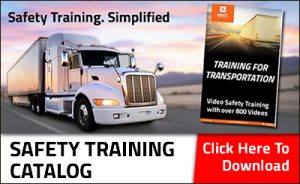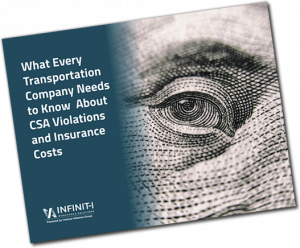In 2019, trucking bankruptcies quadrupled due to nuclear verdicts. The strategy seen in courtrooms time and time again involved plaintiff’s attorneys pleading to the juries’ “better angels” to award families millions of dollars as a result of a crash with a truck. This is with or without the trucker’s fault and seems to have no relationship to the actual incident or its severity.
What is a nuclear verdict?
A nuclear verdict is defined as a judgment in excess of $10 million as a result of a truck-related crash. Nuclear verdicts also indicate a disproportionate relationship between the settlement and the actual economic or physical damages incurred by the plaintiff.
Nuclear Verdicts in 2019
In the first half of the year, 640 carriers went out of business because of nuclear verdicts, according to the Wall Street Journal. The problem has been noticed by major publications, including Business Insider and Bloomberg, calling 2019 a Recession for the trucking industry.
And while the American Trucking Association is working on proposed legislation to combat nuclear verdicts, that will be years in the making.
The Ripple Effect of Nuclear Verdicts
Nuclear verdicts don’t just affect certain trucking companies; they affect us all. From job loss to insurance premium prices, the downstream effect of nuclear verdicts is affecting the entire trucking industry.
In 2019 alone, tens of thousands of drivers lost their jobs due to carrier bankruptcies as a result of nuclear verdicts. With that level of job loss, it’s no wonder 2019 was deemed a trucking recession. Imagine if tens of thousands of people were put out of work in any other industry as a result of rampant lawsuits with no reform in sight: 10,000 investment bankers, 10,000 plumbers, 10,000 doctors…you get the idea. There would be protests, legislation drafted, and major structural changes implemented. But the cultural narrative regarding “big trucks” in this country, even though they are a driver of America’s economy, is that truck drivers and truck companies are dangerous on the road.
This is why trucking companies must be hyper-vigilant.
Preventable Risk
Hyper-vigilance in this day and age means assessing and managing preventable risks. When nuclear verdicts are on the rise, so are insurance premiums. Now it is more important than ever to protect your company and your drivers through regular maintenance and safety training.
According to the FMCSA, last year, driver error accounted for 87 percent of crash risk, while 10 percent was caused by preventable maintenance. With the added scrutiny on trucking companies and the prevalence of nuclear verdicts, it is more important than ever to address those preventable risks to avoid losing your business altogether.
How Can Nuclear Verdicts Affect My Company?
Currently, insurance premiums are rising year over year by 50 – 100 percent, even for smaller carriers. Carriers of all sizes are being affected by nuclear verdicts, with insurance companies mitigating losses on the front end. Some insurance carriers even are getting out of the business altogether.
When profit margins hover around 5 percent, the doubling of insurance premiums can be injurious to trucking companies, even forcing some companies into bankruptcy.
To read more about the downstream effects and help on calculations for future cost models, check out our whitepaper.
What Can I Do to Avoid a Nuclear Verdict?
- • Driver training is the single best thing you can do to protect your company from a nuclear verdict. Contact one of our experts today about customizable training for your drivers.
- • Establish processes and procedures for truck maintenance across your enterprise, even for contractors.
- • Documentation, documentation, documentation. If you don’t document it, it didn’t happen. Make sure all your training and maintenance records are stored and updated properly.









 Key Takeaways to Improve Poor CSA Scores:
Key Takeaways to Improve Poor CSA Scores:




